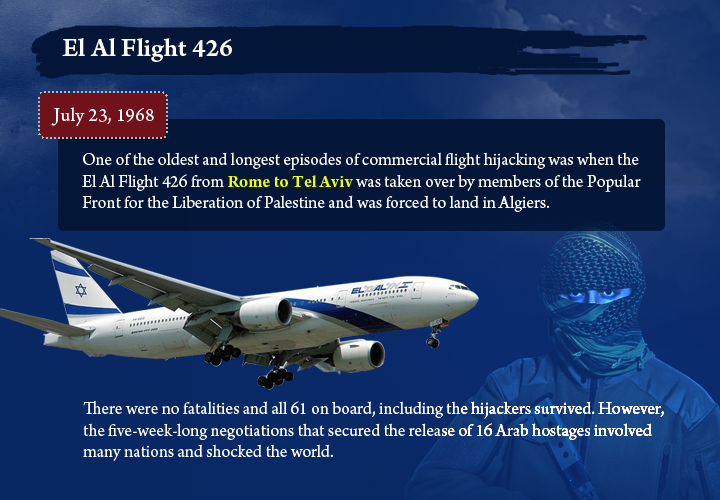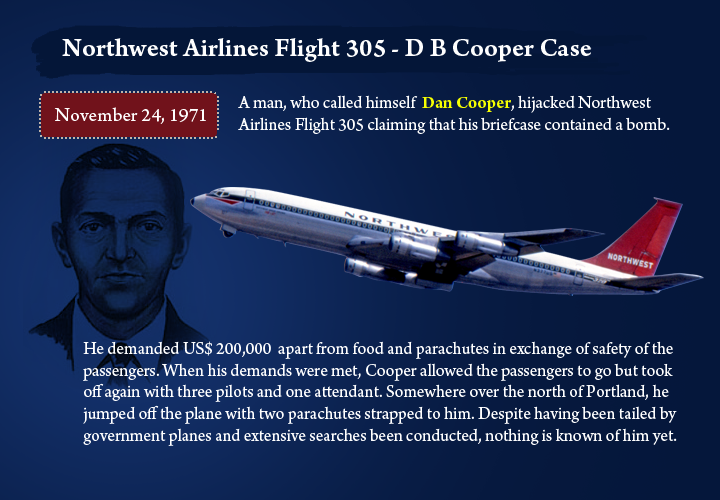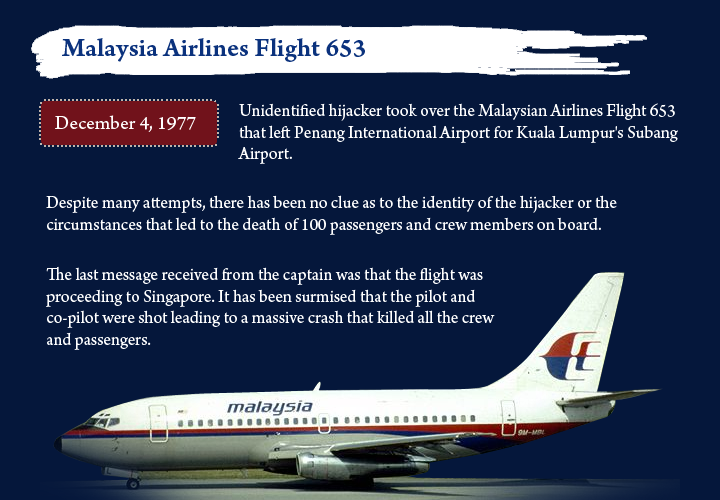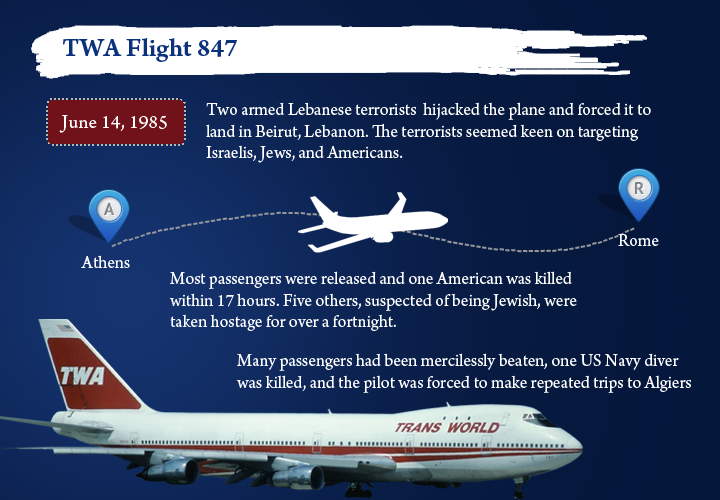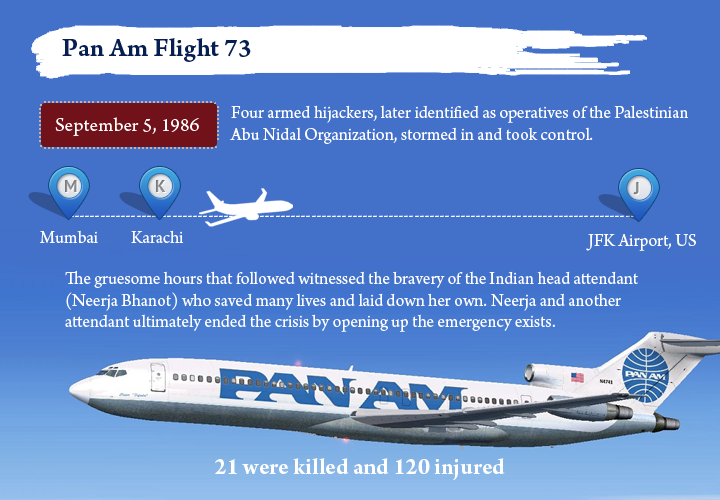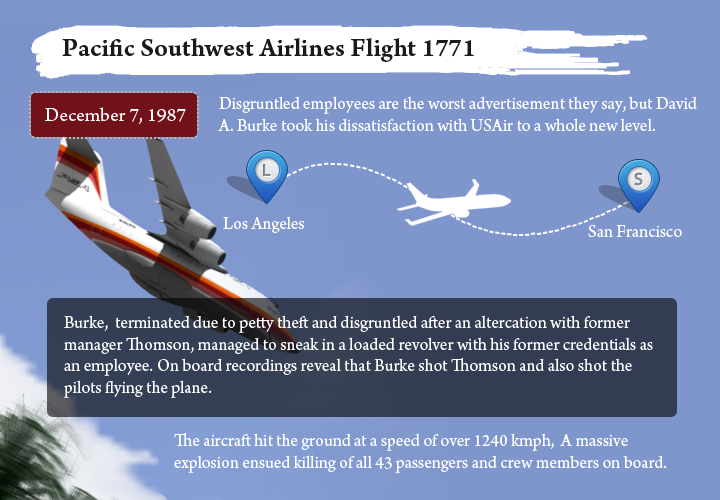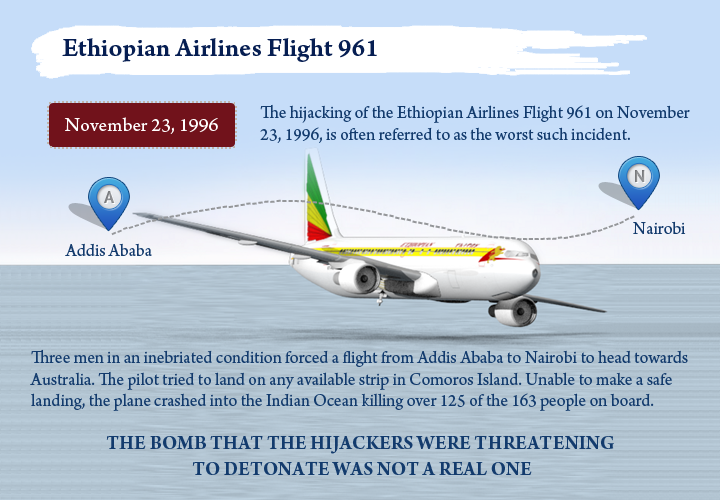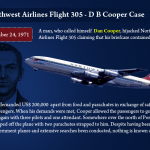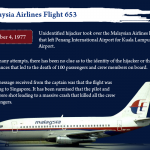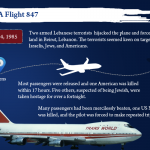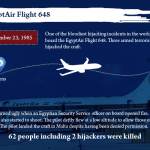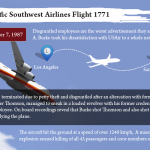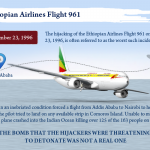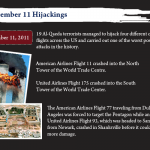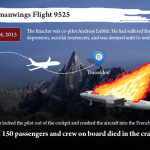El Al Flight 426
Date: July 23, 1968
One of the oldest and one of the longest episodes of commercial flight hijacking was when the El Al Flight 426 from Rome to Tel Aviv was taken over by members of the Popular Front for the Liberation of Palestine and was forced to land in Algiers. Non-Israelis were released and the ensuing operation lasted 40 days. There were no fatalities and all 61 on board, including the hijackers survived. However, the five-week-long negotiations that secured the release of 16 Arab hostages involved many nations and shocked the world. It was also the first of many PFLP hijackings during that period.
Northwest Airlines Flight 305 – D B Cooper Case
Date: November 24, 1971
A day before Thanksgiving, on November 24, 1971, a man, who called himself Dan Cooper, hijacked Northwest Airlines Flight 305 claiming that his briefcase contained a bomb. The media was alerted even as Cooper forced the plane to land in Seattle. He then demanded US$ 200,000 apart from food and parachutes in exchange for safety of the passengers. The media mistakenly started to call the hijacker D. B. Cooper. When his demands were met, Cooper allowed the passengers to go but took off again with three pilots and one attendant. Somewhere over the north of Portland, he jumped off the plane with two parachutes strapped to him. Despite having been tailed by government planes and extensive searches been conducted, nothing is known of him yet.
Malaysia Airlines Flight 653
Date: December 4, 1977
It has been many decades since an “unidentified hijacker” took over the Malaysian Airlines Flight 653 that left Penang International Airport for Kuala Lumpur’s Subang Airport. Despite many attempts, there has been no clue as to the identity of the hijacker or the circumstances that led to the death of 100 passengers and crew members on board. Soon after take off, radio messages indicated that there was a hijacker on board. There could have been more, but lack of evidence has been a big setback in the investigation of this incident. The last message received from the captain was that the flight was proceeding to Singapore. It has been surmised that the pilot and co-pilot were shot leading to a massive crash that killed all the crew and passengers. Cuban Ambassador to Japan Mario Garcia, Malaysia’s Head of Public Works Department Mahfuz Khalid and Minister of Agricultural Minister Ali Haji Ahmad were among those dead.
TWA Flight 847
Date: June 14, 1985
Athens to Rome is a short flying distance. But to those on board the TWA Flight 847 on June 14, 1985, this seemed to be the longest journey they had made. Two armed Lebanese terrorists (Hezbollah and Islamic Jihad operatives) hijacked the plane and forced it to land in Beirut in Lebanon. The terrorists seemed keen on targeting Israelis, Jews, and Americans. The negotiation was a long and an excruciating one. Most passengers were released and one American was killed within 17 hours. Five others, suspected of being Jewish, were taken hostage for over a fortnight. By the time the crisis was resolved and the hostages released, the incredible bravery of the TWA pilot and staff made news. Many passengers had been mercilessly beaten, one US Navy diver was killed, and the pilot was forced to make repeated trips to Algiers and back (often with a bomb in his lap). 146 of the 147 on board returned home safely.
EgyptAir Flight 648
Date: November 23, 1985
One of the bloodiest hijacking incidents in the world was on board the EgyptAir Flight 648 on November 23, 1985. Flight 648 took off from Athens and was en route to Cairo when three armed terrorists, operatives of Abu Nidal, hijacked the craft. Things turned ugly when an Egyptian Security Service officer on board opened fire. The hijackers also started to shoot puncturing the body of the aircraft and depressurizing it. The pilot deftly flew at a low altitude to allow those on board to breathe. Low on fuel and with many of those on board fatally injured, the pilot landed the craft in Malta despite having been denied permission. After a day of futile negotiations and more violence by the hijackers, the Maltese government authorized commandos to storm the plane. The incident took the lives of about 62 people (including 2 hijackers) of the 95 people on board.
Pan Am Flight 73
Date: September 5, 1986
About 360 passengers were on board the Pan Am Airways Flight 73 that arrived at Karachi (Pakistan) from Mumbai (India) and was waiting to leave for its destination, JFK Airport in the US. Four armed hijackers, later identified as operatives of the Palestinian Abu Nidal Organization, stormed in and took control. The ingenuity of the crew allowed the pilot to escape, thereby, grounding the craft and forcing the hijackers to negotiate. The gruesome hours that followed witnessed the bravery of the Indian head attendant (Neerja Bhanot) who saved many lives and laid down her own in an act of supreme bravery. Neerja and another attendant ultimately ended the crisis by opening up the emergency exists. Over 21 were killed and 120 injured (of the 380 passengers and crew on board) when the hijackers opened fire in the craft.
Pacific Southwest Airlines Flight 1771
Date: December 7, 1987
Disgruntled employees are the worst advertisement they say, but David A. Burke took his dissatisfaction with USAir to a whole new level. Pacific Southwest had only recently been acquired by USAir. Flight 1771 was scheduled to fly from Los Angeles to San Francisco. Burke, terminated due to petty theft and disgruntled after an altercation with former manager Thomson, managed to sneak in a loaded revolver with his employee credentials. On board recordings reveal that Burke shot Thomson who was on board and also shot the pilots flying the plane. He, then, pushed the control into a dive. The aircraft hit the ground at a speed of over 1240 kmph – a massive explosion ensued killing of all 43 passengers and crew members on board.
Ethiopian Airlines Flight 961
Date: November 23, 1996
The hijacking of the Ethiopian Airlines Flight 961 on November 23, 1996, is often referred to as the worst such incident before the world came across 9/11. Three young men in an inebriated condition forced a flight from Addis Ababa to Nairobi to head towards Australia (where they intended to seek asylum). Aware that he did not have enough fuel to make the trip, the pilot tried to land on any available strip in Comoros Island. Unable to make a safe landing, the plane crashed into the Indian Ocean killing over 125 of the 163 people on board. What is worse is that the bomb that the hijackers were threatening to detonate was not a real one.
September 11 Hijackings
Date: September 11, 2011
When 19 Al-Qaeda terrorists managed to hijack four different commercial flights across the US and carried out one of the worst possible terror attacks in the history, the world stopped in its tracks and gasped in horror. American Airlines Flight 11 had taken off from Boston and was hijacked en route to Los Angeles. The craft was crashed into the North Tower of the World Trade Center (New York City) by the hijackers.
The next plane to be hijacked was the United Airlines Flight 175 carrying passengers from Boston to Los Angeles. Hijackers forced this craft to crash into the South Tower of the World Trade Center.
The American Airlines Flight 77 traveling from Dulles to Los Angeles was forced to target the Pentagon while another United Airlines Flight 93, which was headed to San Francisco from Newark, crashed in Shanksville before it could cause more damage.
The 9/11 attacks caused about 2,996 deaths and more than 6,000 injuries. This one incident changed the political climate across the world and became the cause for airports across the world to tighten security measures.
Germanwings Flight 9525
Date: March 24, 2015
The term hijacker brings to mind armed terrorists intent on mischief. On board the Germanwings Flight 9525, on March 24, 2015, however, the hijacker was co-pilot Andreas Lubitz. Lubitz had suffered from depression, suicidal tendencies, and was deemed unfit to work by his doctor – a judgment he concealed from his employer. On the fateful flight (scheduled to fly from Barcelona to Dusseldorf), Lubitz locked the pilot out of the cockpit and crashed the craft into the French Alps. All 150 passengers and crew on board died in the crash.



